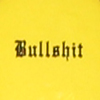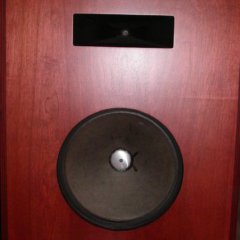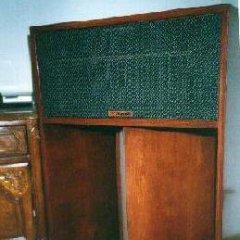-
Posts
15286 -
Joined
-
Last visited
-
Days Won
3
NOSValves last won the day on June 20
NOSValves had the most liked content!
About NOSValves
- Birthday 05/07/1960
Profile Information
-
Gender
Male
-
Location
Mikado, Michigan
-
Interests
Grand Kids, My Jack Russell Max, Fishing, Boating, Camping, Hunting, Drag racing, Baseball, Audio, Music and enjoying life.
Enjoying forced semi-retirement. -
My System
NOS Valves NBS preamplifier, NOS Valves VRD amplifiers, Sony 333-ES SACD player, PC computer music server, Schiit Bifrost DAC with the full schiit, Sota Jewel Turntable w/ Rega RB-300 arm and Denon DL-103R, JVC QL-Y5F Turntable w/ Denon DL-160, Klipsch Modified Lascala's known world wide as Frankenscala's
Contact Methods
-
Website URL
http://www.nosvalves.com
Recent Profile Visitors
14927 profile views
NOSValves's Achievements
-
Hey folks, Thought I'd stop in to let you all know we received some great news today. Not sure how much you all know about stage 4 lung cancer but it is pretty much incurable. The last prognosis we received gave her 6 months 🙁 but after her recent PET scan they found that all the cancer in her chest had shrunk to almost non-existence! ALso even though they were not targeting the cancer in her pancreas since it was not confirmed yet it also had shrunk from the completed Chemo for her chest area! The Radiation doctor seen this morning he thinks he can clear it out of her pancreas with a few weeks of radiation. This does not mean she is clear or completely safe. But it does mean the 6 months is not accurate! The Donations are great and appreciated! But please above all keep up the prayers and positive thoughts whatever belief you support. Thanks a bunch Craig
-
Putting up with you she must be much more than a rock! Same can be said for my wife Rebecca!
-
Dean, I swear if I didn't love you so much I'd drive down to Dayton and beat your booty! But thanks I'm sure we will be needing lots of help. After 37 1/2 I don't what I'll do if I lose her! I don't like it but thanks for the gesture! Craig
-
Thanks everyone. Duke is right I'm health wise just fine. My wife Rebecca has been dealing with what was thought to be stage 3 lung cancer for the last 5 months. Last week we found out it was really stage 4 it had spread beyond her chest to her pancreas. All they have to offer is much more evasive chemotherapy compared to what she just finished. Which she refused and I really don't blame her that stuff is flat out miserable. She is just being treated with immunotherapy but were told 6 months is most likely what she has left. As many I'm sure know as this progresses it'll get real ugly! But as she is now you'd never know it. She gets tired out easy but not much more then that. Keep us in your thoughts and prayers.. this October will be 38 years of marriage not sure what my life looks like beyond that... Craig
-

First Come - First Searve........C22 Inner Glass
NOSValves replied to Gilbert's topic in 2-Channel Home Audio
Can't help you with Hubert's info but no need to go to Germany for McIntosh repo graphics. Check these guys out and if they do not offer what you need if you have enough left of your original broken glass they will use your old to make a new glass or re-letter a face plate. I've used them for years on many different pieces of gear. Many that they offer I supplied them with the examples. https://www.radiodaze.com/reproduction-graphics/ just scroll down to whatever manufacturer you are dealing with.. -

Cornwall IV - to go SET or Class A?
NOSValves replied to aperfectcircle's topic in 2-Channel Home Audio
Who died and put you in charge? Sophia! -

Maybe You Have A Juicy Question?
NOSValves replied to RealMarkDeneen's topic in 2-Channel Home Audio
Mark, That is pretty strange since the seller has a lot of feedback and 100% positive. Did you mention you are Mark Deneen? I have a question what is the signature on the upper right side of the face plate? At least it looks like a signature. Craig -

Maybe You Have A Juicy Question?
NOSValves replied to RealMarkDeneen's topic in 2-Channel Home Audio
That is a completely different spec. don't confuse it with "input sensitivity" is a real world specification. I seriously don't know why this is going on and on... -

Maybe You Have A Juicy Question?
NOSValves replied to RealMarkDeneen's topic in 2-Channel Home Audio
Add feedback lose gain.... and of course the reverse. Definitely one of the reactions to that action. -
Yeah well I seen that but people can name themselves anything they like. It just be a coincidence who knows?
-
Schu, The MQ iron in your VRD's is very different than the iron being discussed here. I was challenged by Paul Hovenga that I couldn't improve the VRD so I challenged Mike to dig through his vault of designs and make me something better! The winding technique is completely different. The only thing in common is size and form factor. I could not tell you what all is technically different because Mike would not tell me. He just said try it, if you like it pay me if not send it back. Well, I paid him It took me hours of tuning the feedback circuit (lowering already low feedback) for that new iron. That Iron as you know sounds better! But it's hard to put into words how they sound better. He wound me up 4 total sets. I own one set, Paul Owns one set, You own one set originally built for Rodney and I built a new pair of amps for a friend of Paul's that I do not recall his name. It really is too bad Mike is no longer of this world! Cheers Craig
-
Wow that was a blast for the past! I wonder if the Bob in this thread was Bob Latino? I suspect it was... if it is a really funny fact, in the end he ended up having his iron wound at the same place I did... Wish I knew for sure if it was him.
-
Ummmm no 10mV is a really low input sensitivity. The VRD was setup at the industry standard for a power amp of 1 Volt to full power. That is what input sensitivity rating is (input voltage to full power). Most modern integrated amplifier (power amp with volume control and source selector switch) are around 500mV to full power. 10mV is insanely sensitive which Leak amps are renowned for! Which also makes them extremely suspectable to noise pickup. Cheers Craig
-

Maybe You Have A Juicy Question?
NOSValves replied to RealMarkDeneen's topic in 2-Channel Home Audio
We may be out of luck with the Model 10, I've never heard a mention of one. I've had a lot of contact over the years about the 12 and E. So, are you saying the 10 is a raw beast while the 12 is more refined? -

Maybe You Have A Juicy Question?
NOSValves replied to RealMarkDeneen's topic in 2-Channel Home Audio
Mark, Good to see you posting! Check your email again about the B-100 bet you wished you stored a dozen of those away LOL. I'm semi-retired. I just do a project or two a month to make mad money. I also service any gear I rebuilt or built in the past but not much seems to happen with any of that stuff. Cheers Craig









